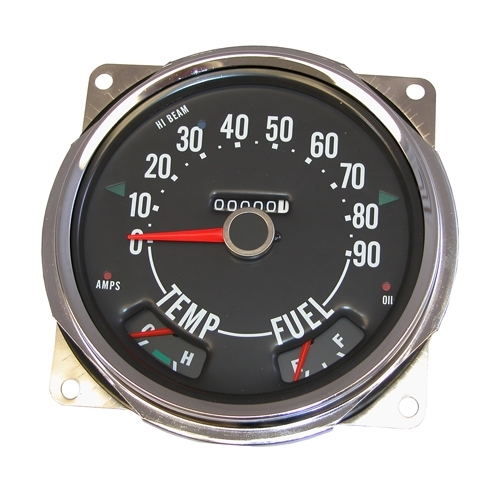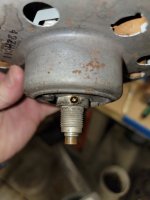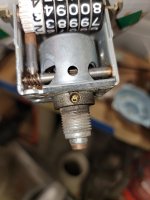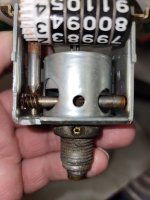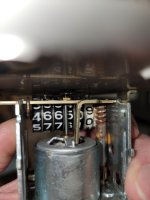elawson
Bigger Hammer
- Nov 26, 2017
- 42
- First Name
- Eric
- Willys Model
- Forward Control
- CJ
- Willys Year:
- 1950
- 1957
- 1964
So, I got the FC-170 out of the garage today. All was good until the oil pressure light came on.
Before starting, the oil pressure light is illuminated. When the engine is started, the oil light "turns off". While in neutral, the oil light remains out at idle, and up to "as high an rpm as I thought reasonable (around 3,000 rpm).
HOWEVER, moving down the road, the oil light comes on...no matter the speed or transmission gear. Pushing the clutch in and/or putting the transmission into neutral, but holding the accelerator pedal position the same....and the oil light goes out. I was able to coast back into the driveway.
The engine coolant temperature was within normal limits. The oil is at the almost full level, and does not seem excessively thin, nor does it smell like gasoline.
Tomorrow, if it's not raining, snowing or too cold (it's 31F right now at almost 7pm local time), I'll check the wiring, then see if I can install an oil pressure gauge and if all is well, a new pressure sender. If the oil pressure actually does go down, then I likely have some engine issues.....my first thought is the crankshaft is sliding back and forth...my 2nd thought is that this is unlikely.
In other news......
The new house garage door opening is 1 inch higher than the old house. The 170 fit into the old house garage with about 2 inches clearance. My problem with the new house garage is the garage floor slab is about 6 inches above the surrounding area and the surrounding area slopes away from the garage. When the 170 is almost out of the garage, the rear wheels are about a foot lower than the front wheels. This tips up the front of the 170 so that it will not clear the opening without driving the rear wheels on 5 layers of 2 by 12 by 3 foot "shims". The 170 had been in the garage long enough that I had to really hunt around for the wood. When I get the gravel put down in front of the garage, this should, I hope, should not be a problem.
In other stuff, I replaced the tie rod ends, the bellcrank (got one from 1st gar offroad), rebuilt the drag link ends and the steering box. The steering is very much improved. It's almost as good as a newer vehicle!
Eric
Snowflake, AZ
Before starting, the oil pressure light is illuminated. When the engine is started, the oil light "turns off". While in neutral, the oil light remains out at idle, and up to "as high an rpm as I thought reasonable (around 3,000 rpm).
HOWEVER, moving down the road, the oil light comes on...no matter the speed or transmission gear. Pushing the clutch in and/or putting the transmission into neutral, but holding the accelerator pedal position the same....and the oil light goes out. I was able to coast back into the driveway.
The engine coolant temperature was within normal limits. The oil is at the almost full level, and does not seem excessively thin, nor does it smell like gasoline.
Tomorrow, if it's not raining, snowing or too cold (it's 31F right now at almost 7pm local time), I'll check the wiring, then see if I can install an oil pressure gauge and if all is well, a new pressure sender. If the oil pressure actually does go down, then I likely have some engine issues.....my first thought is the crankshaft is sliding back and forth...my 2nd thought is that this is unlikely.
In other news......
The new house garage door opening is 1 inch higher than the old house. The 170 fit into the old house garage with about 2 inches clearance. My problem with the new house garage is the garage floor slab is about 6 inches above the surrounding area and the surrounding area slopes away from the garage. When the 170 is almost out of the garage, the rear wheels are about a foot lower than the front wheels. This tips up the front of the 170 so that it will not clear the opening without driving the rear wheels on 5 layers of 2 by 12 by 3 foot "shims". The 170 had been in the garage long enough that I had to really hunt around for the wood. When I get the gravel put down in front of the garage, this should, I hope, should not be a problem.
In other stuff, I replaced the tie rod ends, the bellcrank (got one from 1st gar offroad), rebuilt the drag link ends and the steering box. The steering is very much improved. It's almost as good as a newer vehicle!
Eric
Snowflake, AZ

